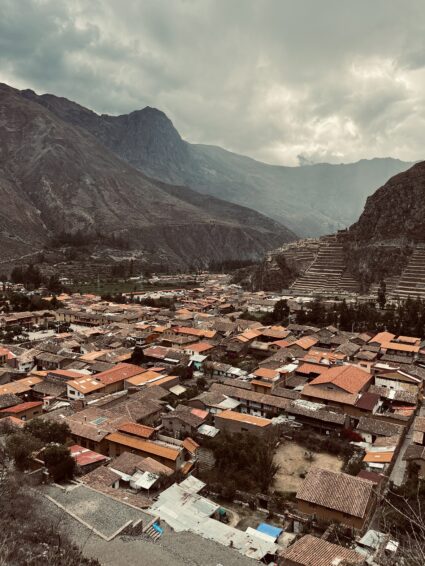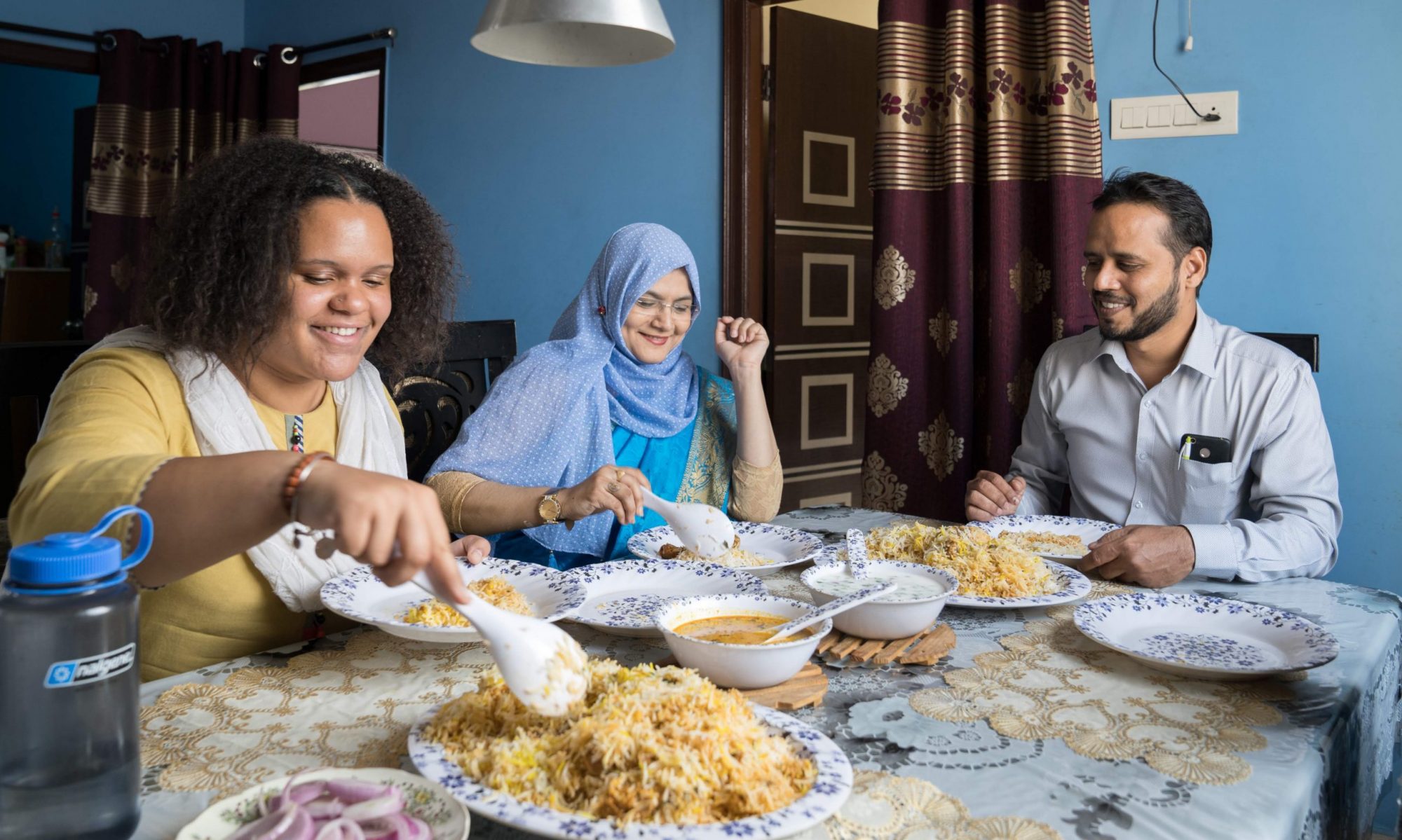by Elaine, Civic Semester Participant




As we drove up the rocky converted terraces, I wasn’t sure what to expect about our visit. In fact, all that was really assured to us was that we’d finally get to see Incan ruins—so I’m sure my sentiment was shared with the rest of the cohort. I’d never even heard of the name Ollantaytambo—or as Tziavi called it, Oi Oi Taytambo—until the week before. Yet as more buildings started getting closer together and the roads started narrowing to what felt like the size of a one-way road, I knew we had arrived.
Once we reached the plaza, the town’s tourist population actively increased as each of us hopped out of the van. I looked around to get a scope of the options and one word stood out most of all—pizza. It seemed like every restaurant and cafe had those five letters posted on their front signs, each in different fonts to make theirs stand out most. There was a solid agreement amongst most of us to try some later for lunch, but “not the ones with english menus” as those would definitely be more expensive. We continued our individual scouting for possible meal options for a few more minutes until it was time to head toward our organization for the day, Ayni Wasi (head over to Emma’s Yak to learn more about it ;)).
In closing out our organization visit, it was as if my hunger knew it had to turn its switch on. We all gathered outside trying to decide which cuisine seemed most attractive at the time while also trying to get each person to stay within the limit of their 20 soles. In the end, we split three ways—my group pursuing the earlier proposal of pizza. As we walked back to the plaza, we were immediately thrown into chaos as we tried making a decision: workers bombarding us with invites to go into their restaurant as we tried to look at their pizza prices, the uncertainty of whether the next restaurant would have cheaper food, the worry of getting overcharged as tourists. In turning down restaurant after restaurant, I considered my earlier self so naïve to think I could easily pick a place to eat in a town that surely receives thousands of tourists a day. Even then, we were determined to put an end to our culinary struggle.
We came to a stop at a sign that finally checked our boxes—it had pizza and was the cheapest of the more than eight restaurants we’d declined. As resident Spanish speaker of the group, I saw to it that the restaurant would be adequate and safe by conducting a slight interrogation of the woman trying to draw us into her place. She looked surprised to be questioned, but still welcomed us in and handed us menus before we made our way up the stairs. Our table consisted of Teagan, Sophia, Veena, Tziavi, Emma, and me which made things simple: one vegetarian pizza and one with meat. It seemed like the woman from before, who was now taking our order, came to the understanding that we weren’t her average tourists because as we decided to get a jug of lemonade, she suggested the 15 soles meal that ultimately added a plate of rice and some guacamole, and the juice to our tab for the price of one. While the dishes took their time to make their way to our table, it reassured me that what the woman was serving us wasn’t just ready to go. Our hunger sped up the process of our meal, and with a little over an hour left, we decided it was time to go see the Incan ruins that had been promoted for the past week.
The choice to go to the sun temple was quick. It had been in the background since we’d arrived, and so it was time to try and go see it for ourselves. Unfortunately for us, our anticipation was cut short when we arrived at the entrance and saw the entry cost 70 soles for each of us (my wallet consisted of 50 cents at the moment). Slightly disappointed, we agreed to walk over to the ruins on the opposite side—which we knew were indeed free—, but not before stopping for an ice cream suggested by Sophia. With our treat in hand, we made our way over to the ruins’ entrance and began working our way up as soon as we arrived.
Not even halfway up, the climbing hit me hard and I started getting winded easily. I really wanted to make it all the way to the ancient storage buildings we saw from the bottom of the trail, but it just wasn’t my destiny. While the other girls kept climbing, Tziavi and I decided to take a break, which I’m glad we did because the two of us ended up taking a detour and ended up coming across some smaller ruins on the far side of the mountain we were ascending. Not only did we get an incredible view of the town from high up, but we also got to go through and really take in the intricacies of Incan architecture. From the inclusion of what seemed like built in storage under seating space, to the sturdiness of their rock placement for building, and even designing in a manner that mimics mountain shapes, we were amazed at what the Incas created. It was surreal to actually stand in a structure that has existed for centuries and get a fully different perspective than that which I had at the bottom of the mountain. During those minutes spent there, I forgot the pizza and the walking around and the entirety of the trip it took to get there because it was just me, Tziavi, and a whole lot of history. I wasn’t sure what those buildings were there for, or who they sheltered, but I did know that they came to be through ingenious design and craft and didn’t seem to be disappearing soon.
Ollantaytambo may be home for some and for others like me, only a visit. But one thing that was made clear to me is that it gives a seat to all types of backgrounds—be it Quechua, American, or anything else. Simply entering the town allows you to immerse yourself in a diverse environment. At every corner of every street, many walks of life emerge and yet, the moment you decide to ascend the mountain, you can experience life that once was.
